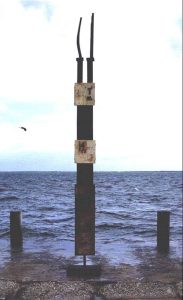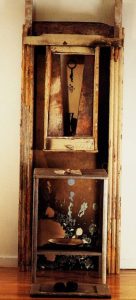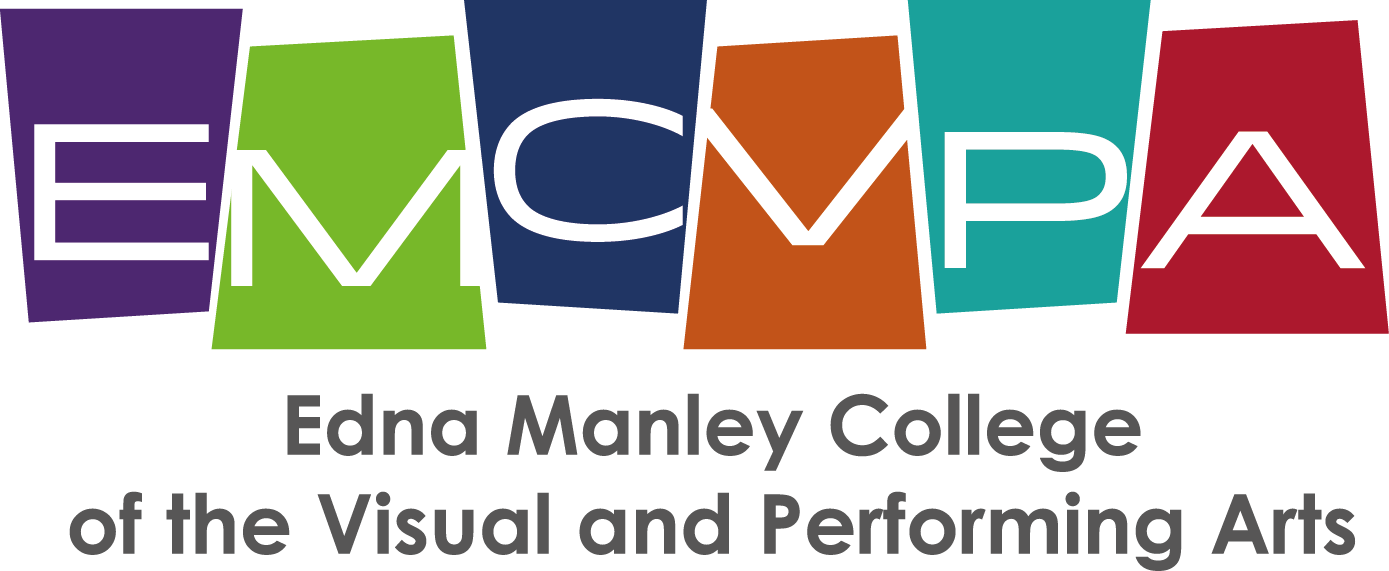Edna Manley College Visual and Performing Arts
Petrona Morrison
A gentle giant …Veerle Poupeye celebrates Petrona Morrison
by Veerle Poupeye
Petrona Morrison was born in Manchester, Jamaica in 1954. She received her initial art training in Canada, at McMaster University, where she graduated in 1976. She left Jamaica again in the mid 1980s for MFA studies at Howard University, which involved a year in Kenya, and subsequently lived between Jamaica and the USA, where she was artist-in-residence at the Studio Museum in Harlem from 1994 to 1995. She returned to Jamaica in 1995 but travels regularly for exhibitions, such as the Havana biennale in 1997, and short-term residencies, such as at Contemporary Caribbean Arts in Trinidad (2002) and the Bag Factory in Johannesburg
(2005).
Morrison’s residencies in Kenya, Harlem and South Africa have significantly influenced her artistic development. Her earliest works were fairly conventional figurative paintings and drawings with autobiographical overtones but her art took a different course in the late 1980s when she started producing textural reliefs and assemblages that incorporated discarded materials. These reflected her interest in traditional African art forms, such as Dogon architecture and the carved doors of Mombasa, but invoked these sources poetically rather than literally, as symbolic acts of reconstruction and reconnection. One example is Sentinel (1992), a 12 foot totemic structure made from scrap wood and metal and topped by a horned form that reminds of the Chi Wara headdresses of the Bambara. Her early assemblages signified, in her words, “transformation, renewal and healing,” on a personal and broader social level, and these have
remained central themes.
 Petrona Morrison – Sentinel (1992), collection: National Gallery of Jamaica.
Petrona Morrison – Sentinel (1992), collection: National Gallery of Jamaica.
Morrison’s residency at the Studio Museum resulted in larger, more three-dimensional constructions that incorporated urban debris such as wood beams and metal fragments from nearby derelict buildings. These recuperation materials were turned into altar-like structures that evoke the frailty of the body and the restorative power of the spirit in the face of material transience. These ritualistic works also mark a turn towards a spirituality related to African-derived New World religions rather than their African sources.

Petrona Morrison – Sanctuary/Space (For Me), 1995
By the late 1990s, Morrison’s interest in articulating ritual spaces resulted in room-sized installations that were at first constructed from the recuperation materials she had used in her earlier assemblages but gradually shifted to other, less materially dense media such as medical x-rays, placed in front of light boxes, and other ready-made images, often combined with a few evocative found or constructed objects. Her work also became more concerned with the here and now, referring to events in her own life and the social tensions in Jamaican society.
This new direction culminated in the room-sized installation Reality/Representation (2004) which was created for Curator’s Eye I, a major exhibition at the NGJ guest-curated by Lowery Stokes-Sims. In what was perhaps her most moving work to date, autobiographical issues that had been implied in her previous work again took center stage. She explicitly confronted her medical history, a congenital condition which has resulted in her short stature. The installation consisted of a fully black room, illuminated by light boxes covered with x-rays of body sizes that could have been her own, combined with new photographs of herself taken from unusually high or low vantage points as well as pre-existing family photographs, anthropometric images, and aerial photographs and maps. These images were organized in broad horizontal and vertical bands, and juxtaposed with two simple pieces of furniture, one short and one very tall white chair – ghostly skeletal presences in narrow alcoves in the black walls. The low placement of the images and the scale of the furniture challenged viewers’ expectations about what constitutes a “normal” vantage point and size. The central component of the room was a self-image in which Morrison became an exceptionally tall woman by splicing an over life-size photograph of herself with horizontal bands of black. This central image echoed the totemic formats of her earlier assemblages and installations, thus confirming the continuity of her thematic concerns, despite
the change in media and symbolic vehicles.
Since then, Petrona Morrison’s work has become even more dematerialized and conceptual and she now mainly works with cheaply printed digital photographs that are wall-mounted in simple horizontal and vertical grid formations. The documentary tendencies in her work have become more pronounced, as in her South African Diary (2005), which documented her experience, as a black Jamaican, of the racial, social and cultural tensions of the post-Apartheid era. Her shift towards digital images and, most recently, video can be part attributed to practical considerations, such as her desire to produce work that is less expensive and physically
challenging and more portable. The new economy of means and the ephemeral, site-specific nature of her recent installations fundamentally defy conventional notions of the art object and its material value. By including unedited photographs that were made by others, she also challenges the question of authorship, which is an important aspect of how artistic value is conventionally construed. Her refusal to produce cultural commodities amounts to an implied critical intervention into the increasingly conservative, market-driven context of Jamaican art.
Morrison has taught at the EMC since the early 1990s and has pioneered the teaching of installation art there. Her influence on recent fine arts graduates is noticeable, both in the work itself and the self-reflexivity they bring to their artistic practice. In 2005, she became Director of the EMC’s School of Visual Arts and her views about art play an important role in how its programs are developed. In particular, she has helped to preserve space for experimental, a-commercial approaches, at a moment when developments in the local art world pressure artists to conform to market demands.

